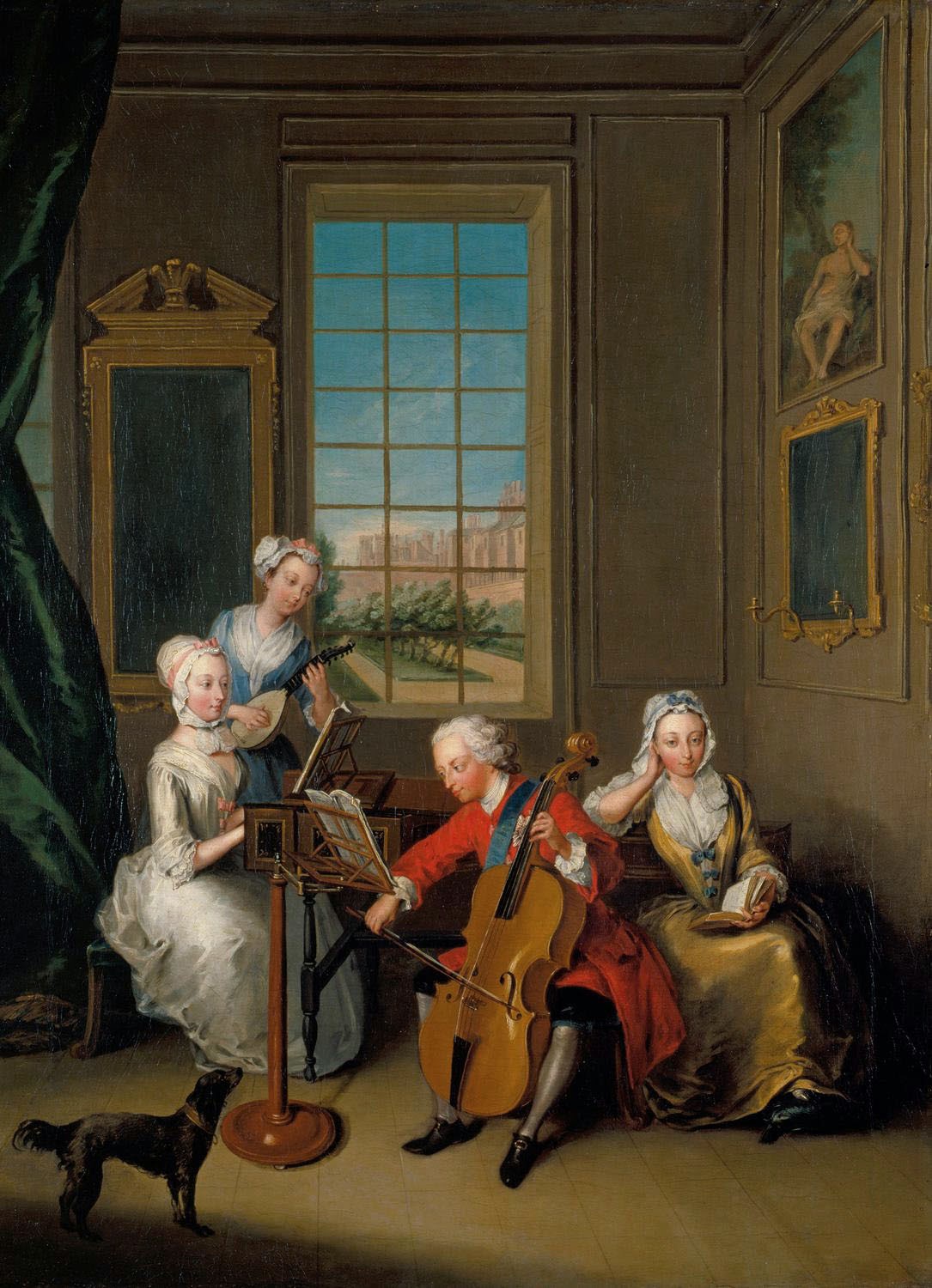Victoria here.The second venue in our Royal Day Out was the Queen’s Gallery, actually, like the Mews, a part of the Buckingham Palace complex, and one that you may visit almost year-round.
Below, a view of the entrance to the Queen’s Gallery when Kristine and I visited for the exhibition Victoria and Albert: Art and Love in 2010.
The First Georgians celebrated the tricentennial of the accession of the House of Hanover to the English Crown, When Queen Anne died in 1714, it had been decided that her successor would be Electress Sophia of Hanover or her issue. Despite at least seventeen pregnancies, none of Anne’s children had survived to adulthood. The British Parliament was determined the monarchy would not go to a Roman Catholic so they disallowed all the family of the former king, James II and the Stuarts.
Queen Anne of Great Britain and Ireland (1665-1714) c. 1702-04
by Sir Godfrey Kneller (1646-1723)
Sophia Electress of Hanover (1630 -1714)
attributed to Noel III Jouvenet
Sophia was the granddaughter of King James I.
George I of Great Britain and Ireland (1660-1727)
Studio of Sir Godfrey Kneller
To quote from the text panel, “Dressed like a Roman Emperor, the new king is represented as ‘Defender of the Faith’ ready to champion the Protestant cause.” George I never learned to speak English well and spent a great deal of time in his home state of Hanover.
Dr. Lucy Worsley’s series The First Georgians ran on the BBC in 2014.
From Dr. Worsley’s website: “The series tells the story of George I, George II and their family… I was given access to treasures from the Royal Collection as they were prepared for a new exhibition at the Queen’s Gallery, Buckingham Palace – providing a rare and personal view of George I and his feuding dynasty.The Hanoverians arrived at a moment when Britain was changing fast. We looked at satire, gin-drinking, smallpox, the slave trade, the crushing of rebellion and the building of an empire – all at a time when Britain was embracing freedom of speech and modern cabinet government.”
Dr. Worsley, chief curator at Historic Royal Palaces, also writes of the First Georgians on her blog, here.
Two pictures above: Mirror, Table and Candle-Stand
by John Gumley and William Turing, c. 1727
George II 1683-1769, c. 1760
by Louis-Francois Roubiliac 1702-62
The Music Party: Frederick, Prince of Wales with His Three Eldest Sisters, 1733
by Philippe Mercier (1689-1760)
David Garrick with His Wife Eva-Marie Veigel c. 1757-64
by William Hogarth 1697-1764
The Queen’s Gallery was crowded with viewers, most eager to get along to the next stage of the
Royal Day Out: Buckingham Palace. But wait until you hear what happened to me! Remember, I am the one who insists on reading (almost) every word of every text panel along the way.
More Loose In London Coming Soon!




You didn't get locked in, did you?
I wonder whether the early Georges were wishing all the time that they could just go home and stay there. It's amazing to me now how important it was, for so many centuries, whether one was Catholic or Protestant. I'm also thinking of Edward IV, Mary I, and Elizabeth I, and the people who died for their religion then. Thank you Henry VIII! (not)
Even now the monarch cannot be Catholic, because he or she is the head of the Church of England. But they can now marry a Catholic.
Not locked in!!! But a memorable part of the day, particularly for Kristine's feet.